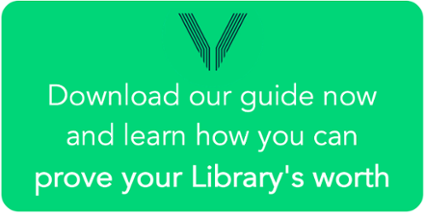Share this
How do we combat fake news? 3 simple steps before clicking 'Share'
January 24, 2018
We tend to think of fake news as a modern problem, thanks to the increased focus on fake news generated by events like the 2016 American presidential election. But the spread of misinformation is a concern that dates back much further. In 1710, Jonathan Swift wrote, “Falsehood flies, and the Truth comes limping after it.”
Perhaps the problem is not so much the existence of fake news, but the increasingly efficient ways people and organisations have of disseminating falsehoods today. We’ve seen fake websites created to imitate reputable news sources—these have ranged from sophisticated efforts, with fake URLs and designs that look like recognised news outlets, to simple hoax generators that rely on our tendency to skim headlines on social media.
 The problems created by fake news are wide-ranging in type and severity. Democracy relies on a well-informed electorate to function well. Whatever the specific motives behind each fake news story, the cumulative effect is the erosion of civility and trust in our institutions—punctuated, sometimes, by violence.
The problems created by fake news are wide-ranging in type and severity. Democracy relies on a well-informed electorate to function well. Whatever the specific motives behind each fake news story, the cumulative effect is the erosion of civility and trust in our institutions—punctuated, sometimes, by violence.
Fortunately, there is a wealth of advice already out there to help us combat fake news individually. There are also new initiatives and technologies being developed to assist us. While we wait for artificial intelligence or social media7 networks to develop better methods of filtering out the falsehoods, there are three simple steps we can do before clicking ‘share’ in that newsfeed article:
Always click through to the article
Don’t just read the headline. Examine the story, the website, and even the URL. This will help you determine if you have visited a trusted news source, and spot any fakes.
Find another source
Check to see if the story is corroborated elsewhere before sharing. The more widely something is reported, the more organisations have had a chance to fact-check it. Let them do the real work for you.
Apply the smell test
Is the story too good to be true? If so, there’s a solid chance it’s fake. Ask yourself - is there an obvious motive or benefit someone would have for generating it? Don’t let wanting to believe the story be a substitute for actually believing it.
We can hope that future innovations will go a long way to helping us solve the age-old problem of fake news. But in the meantime, we all must do our own due diligence. If you need help, your library can be a key resource to help members of your organisation identify trustworthy sources, or provide current awareness updates that have already been vetted.
What would you add to our list?
Share this
- December 2025 (1)
- November 2025 (2)
- October 2025 (3)
- September 2025 (2)
- August 2025 (2)
- July 2025 (4)
- June 2025 (3)
- May 2025 (2)
- April 2025 (1)
- March 2025 (1)
- October 2024 (1)
- July 2024 (1)
- June 2024 (2)
- May 2024 (2)
- April 2024 (3)
- March 2024 (3)
- February 2024 (4)
- January 2024 (2)
- December 2023 (1)
- November 2023 (2)
- October 2023 (2)
- September 2023 (1)
- August 2023 (3)
- July 2023 (5)
- June 2023 (2)
- May 2023 (2)
- April 2023 (4)
- March 2023 (1)
- February 2023 (1)
- January 2023 (2)
- November 2022 (2)
- September 2022 (2)
- August 2022 (2)
- July 2022 (1)
- June 2022 (1)
- May 2022 (2)
- April 2022 (3)
- March 2022 (1)
- February 2022 (2)
- December 2021 (2)
- November 2021 (2)
- October 2021 (2)
- September 2021 (2)
- August 2021 (2)
- July 2021 (2)
- June 2021 (2)
- May 2021 (1)
- April 2021 (2)
- March 2021 (1)
- February 2021 (3)
- January 2021 (2)
- November 2020 (3)
- October 2020 (1)
- August 2020 (2)
- July 2020 (4)
- June 2020 (1)
- May 2020 (1)
- April 2020 (2)
- March 2020 (2)
- February 2020 (3)
- January 2020 (1)
- December 2019 (2)
- November 2019 (1)
- October 2019 (1)
- September 2019 (1)
- August 2019 (3)
- July 2019 (3)
- June 2019 (3)
- May 2019 (2)
- April 2019 (1)
- March 2019 (2)
- February 2019 (3)
- January 2019 (3)
- December 2018 (1)
- November 2018 (2)
- October 2018 (2)
- September 2018 (1)
- August 2018 (2)
- July 2018 (1)
- June 2018 (2)
- May 2018 (3)
- April 2018 (3)
- March 2018 (1)
- February 2018 (3)
- January 2018 (1)
- November 2017 (1)
- October 2017 (1)
- July 2017 (1)
- April 2017 (2)
- March 2017 (3)
- February 2017 (1)
- January 2017 (1)
- November 2016 (2)
- October 2016 (1)
- September 2016 (1)
- August 2016 (2)
- June 2016 (1)
- May 2016 (1)
- April 2016 (1)
